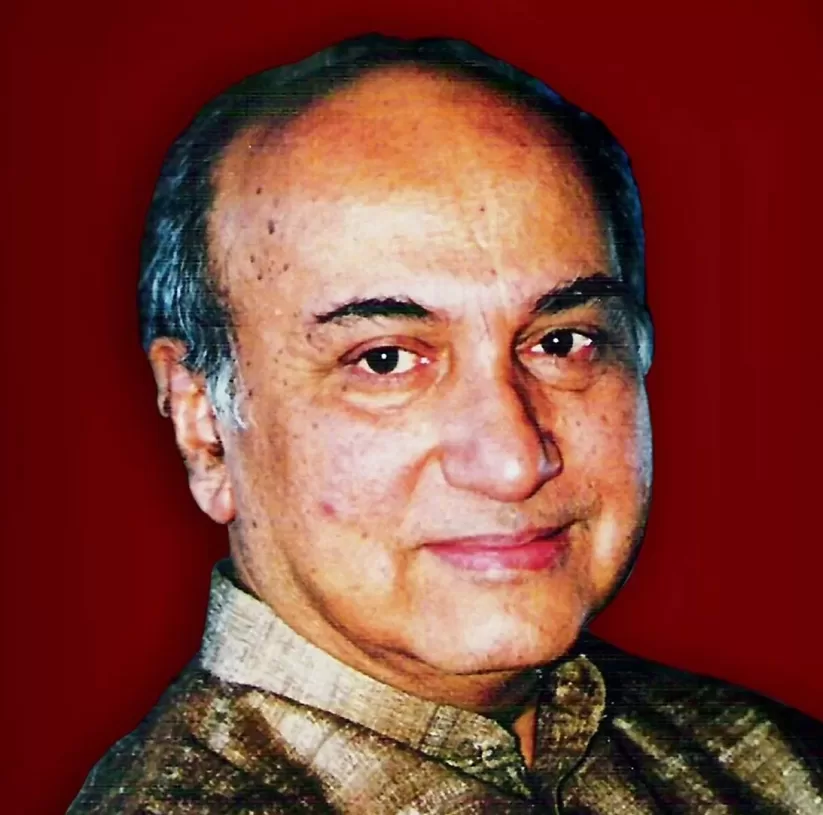By Ambassador (Retd) Pascal Alan Nazareth
The flight into Egypt is recounted in the Gospel of Matthew (Matthew 2:13–23). Soon after the visit by the Magi, an angel appeared to Joseph in a dream telling him to flee to Egypt with Mary and the infant Jesus since King Herod would seek the child to kill him. The episode is frequently shown in art, as the final episode of the Nativity of Jesus in art, and was a common component in cycles of the Life of the Virgin as well as the Life of Christ. Within the narrative tradition, an iconic representation of the “Rest on the Flight into Egypt” developed after the 14th century.
What was the route of the ‘Flight into Egypt’, and what was its destination?
Who were the Magi? Where did they come from and how long did it take them to reach the Holy Family?
For the Holy Family’s flight into Egypt the easiest route was the coastal way by the sea from Jerusalem to Alexandria; the only mode of transport available to them was a donkey. Most Coptic Christian icons of the ‘flight into Egypt’ (a scan of one of them which is attached) show Mary, with infant Jesus in her arms, sitting on a donkey and Joseph leading it on foot.
The distance between Jerusalem and Alexandria is 320 miles. As the latter was a large city and undoubtedly had some of King Herod’s spies in it, the Holy Family averted it and turned southwards towards Bubastis (later Fustat, Cairo) and travelled all the way to Asyut, which is 400 miles south of Alexandria. They stopped at many places for rest and shelter during the night. In a mountain, eight miles south of Asyut they found caves and in two of which they lived for many months. A large Coptic Monastery is on this mountainside beneath which is a Crypt Church built in the caves in which the Holy Family lived. I have visited this famed monastery and church during my three tenure as Ambassador of India to Egypt (1989 – 1992).
The “Magi” were those who studied star movements and their effects on human affairs. In India, they were known as astrologers.
David Weintraub, professor of physics and astronomy at Vanderbilt University in Tennessee, in an interview to ‘All About Space’ journal stated: “Astrology was widely used at that time, and due to a particular alignment of planets and stars, the Magi may have read a hidden meaning in this. Jupiter’s display could have been of great significance, as astrology associated Jupiter with royalty, and the moon passing over could have heralded the birth of Christ. But modern astronomers don’t put any credence in astrology.
In the early 1st century AD, there were Magi in many west and central Asian countries. However, as the three Magi brought gifts of gold and frankincense for the Infant Jesus and these were then available only in Yemen (from where Queen of Sheba had taken these gifts to King Solomon in Jerusalem 900 years earlier) they most likely came from this country. The distance from its capital Sanaa to Jerusalem is 1260 miles! The Magi came on camels and which “typically cover about 20 miles per day, depending on the weather, road conditions, and distance to the next water source” (Cf Wikipedia). As they were “following a star” their travel pace would also have depended on its movement. It, therefore, might have taken them up to 90 days to reach Jerusalem and another day to reach the Holy Family and present their valuable gifts to the Infant Jesus.
It is notable that the Catholic Church celebrates Epiphany on January 6, two weeks after Christmas.
As the Magi returned home without meeting King Herod, despite his request that they do so and inform him where the “King of the Jews” was born, some more time would have elapsed before King Herod discovered they had deceived him. That is why in ordering the “slaughter of the innocents” he stipulated that “all boys in Bethlehem and its vicinity, two years old and under” should be killed. This is testified by Matthew 2:16 as under:
“When Herod realised that he had been outwitted by the Magi, he was furious, and gave orders to kill all the boys in Bethlehem and its vicinity who were two years old and under, in accordance with the time he had learned from the Magi”.
Therefore, when the Holy Family’s flight into Egypt took place, the Infant Jesus quite likely was over one year old. Egypt’s Coptic Christians believe he was “2 years old” when he arrived in Asyut in southern Egypt.
King Herod died in 4AD. The Romans then appointed his two sons Herod Archelaus and Herod Antipas as ‘Tetrachs’ of Judea and Galilee. As the former turned out as brutal as his father and this caused unrest among the people, the Roman Governor replaced him in 6AD. This was when it became safe for the Holy Family to return to Palestine / their home in Nazareth, where Joseph and Mary had lived before Jesus was born.
Their return journey was more joyful and leisurely than their outward journey. By this time, the fame of the Holy Family, particularly of Jesus, had spread in many parts of Egypt because of the miracles he had performed in the preceding six years. The first of these was the miraculous opening of Rafah city gates, which were closed and locked when the Holy Family arrived there on the first night of their “flight”. Some days later, while traversing Egypt’s eastern desert, when Mary and Joseph were thirsty, he touched a sand mound and a spring of water flowed from it. When they entered an old Pharaonic temple to rest in it, its pillars trembled as Isaiah had foretold:”The idols of Egypt will tremble at his presence.” On the way up to the mountain caves at Asyut, when Jesus touched three clay pigeons, they came to life and began to fly above him, Mary and Joseph. Since then, this site has been revered as the “Place of the Flying Pigeons”.
On the Holy Family’s return journey, they again spent some days in Bubastis as they had done on their earlier visit four years ago. Among its famed sites associated with the Holy Family in it (which is now the mega city of Cairo) are the Church of Abu Serga (Saint Sergius Church) and the Holy Virgin Mary (Hanging Church), located in the Coptic neighbourhood of Old Cairo. It is said to have been built on the ruins of a Roman fortress where the Holy Family had sought shelter for one night during their outward travel to Asyut in southern Egypt. Isobel and I visited all these churches during our three-year stay in Cairo, Egypt; details of these and all other sacred sites in Egypt associated with the Holy Family’s four-year stay in Egypt are contained in a BBC report on them, the link to which is: https://www.bbc.com/travel/article/20221116-holy-family-trail-a-new-path-though-egypts-holiest-sites.
On the inward journey into Egypt, the Holy Family had averted Alexandria because of the likelihood of King Herod’s spies in it. As this was no longer the “Way by the Sea’ from Alexandria to Jerusalem was the easiest, it is widely believed by Egyptian Coptic Christians that they took this route to return to their home in Nazareth. However, the presumed meeting/interaction of Jesus (now about six years old) with Buddhist monks would have taken place at some place in the desert between Bubastis and Alexandria, as this is where the latter resided in small monastic communities.
That the boy Jesus had acquired some amazing new concepts of love, compassion, forgiveness, and nonviolence in Egypt is clear from his interaction, at the age of 12, in the Jerusalem Temple when he sat “in the midst of the doctors, hearing and asking them questions, and all that heard him were astonished at his wisdom and his answers.”
That the mentioned new concepts (which would be publicly enunciated by him 18 years later in his ‘Sermon on the Mount’) could not have been acquired by Jesus from Judaism’s scriptures is clear from the numerous instances in which Yahveh’s wrath and brutal violence is manifested against sinful humanity and anyone who attacked his “chosen people the best examples of this are his command to King Saul to “utterly destroy all Amalakite man and woman, infant and nursing child, ox and sheep, camel and donkey” and ordering the Levites to “kill three thousand of those who had worshipped the Golden Calf” ((Exodus 32:28). It also could not have come from the long prevalent Mosaic Code which prescribed ‘An eye for an eye and a tooth for a tooth’
Will Durant has averred that Greco-Buddhist missionaries whom Indian Emperor Ashoka had sent to ancient Syria, Egypt, and Greece may have helped prepare the ground for Christian teaching. He pointed out that Buddhism had become the official religion of the successor kingdoms of Alexander the Great in Central Asia. Indo-Greek King Menander I who converted to Buddhism became one of its great patrons. (Cf; his Milinda Panha.) Some modern historians have suggested that the pre-Christian monastic order in Egypt of the Therapeutae might have been derived from the Pāli word “Theravāda”, [13] a form of Buddhism, and it may have drawn inspiration “almost entirely from the teaching and practices of Buddhist asceticism”.[14]
Buddhist gravestones from the Ptolemaic period have been found in Alexandria in Egypt decorated with depictions of the dharma wheel, showing that Buddhists were living in Hellenistic Egypt at the time Christianity began. [16] The presence of Buddhists in Alexandria has led one author to note: “It was later in this very place that some of the most active centres of Christianity were established.”[14]
Modern Christian scholars generally hold there is no direct evidence of any influence of Buddhism on Christianity. However, some historians such as Jerry H. Bentley suggest that there is a real possibility that Buddhism influenced the early development of Christianity. [19]
It is known that prominent early Christians were aware of Buddha and some Buddhist stories. Saint Jerome (4th century AD) mentions the birth of the Buddha, who he says “was born from the side of a virgin.” The early church father Clement of Alexandria (died 215 AD) was also aware of Buddha, writing in his Stromata (Bk I, Ch XV): ” Among the Indian gymnosophists are two classes, some are called Sarmanæ and others Brahmins. And those of the Sarmanæ who are called ‘Hylobii’ neither inhabit cities, nor have roofs over them, but are clothed in the bark of trees, feed on nuts, and drink water in their hands. Like those called Encratites in the present day, they know no marriage nor begetting of children. Some, too, of the Indians obey the precepts of Buddha (Βούττα) whom, on account of his extraordinary sanctity, they have raised to divine honours.”[20] (Cf:https://en.wikipedia.org/wiki/Buddhism_and_Christianity).
Whatever the actual truth about these affirmations and speculations, there is no doubt the stay of the boy Jesus in Egypt had a deep spiritual impact on him.





Discussion about this post